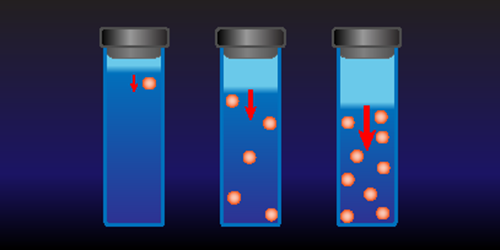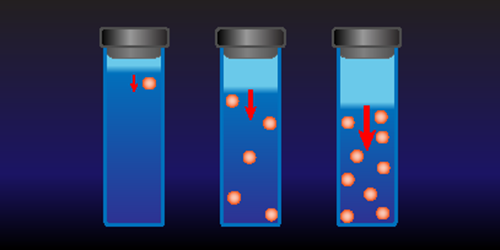Racing to the Bottom
Shaking a snow globe disperses the glittery particles that have collected at the bottom, creating a haze that slowly falls back to where it started. How long the snow takes to settle depends on the interactions between the fluid and the particles. But generally the haze takes much longer to settle than a single particle falling through the same fluid would. Now Roberto Piazza and colleagues from Milan Polytechnic in Italy have shown that if the particles interact via strong attractive forces, then the opposite happens, and denser particle clouds settle faster instead.
The group suspended spherical nanoparticles in water, adding a surfactant. The surfactant molecules form tiny aggregates that push the particles towards each other inducing an attractive force that can be tuned by varying the surfactant concentration and the fluid’s temperature. The authors shook the mixture, placed it in a centrifuge, and recorded the particles’ sedimentation velocities—the average speed at which the particles fell through the fluid.
For a given concentration of particles, Piazza et al. observed that the particles fell faster as the attractive interaction between them got stronger. When the particles were sticky enough that they almost clumped together, their settling velocity exceeded that measured for a single particle and increased further as more particles were added to the fluid. The authors suggest that the motion of these strongly attractive particles can be likened to a school of fish, in which the closeness of the fish reduces the hindrance of the surrounding fluid, allowing them to move (in this case fall) faster than they otherwise would.
This research is published in Physical Review Letters.
–Katherine Wright





